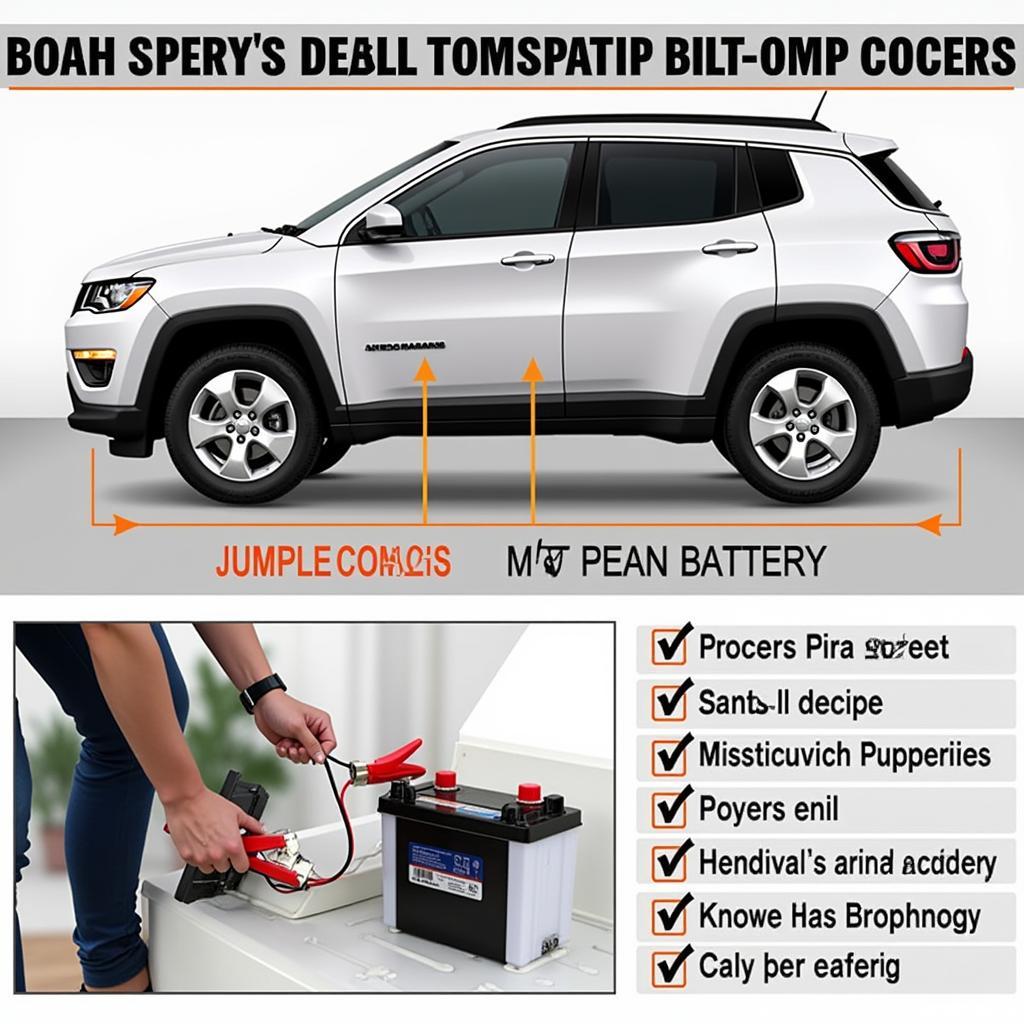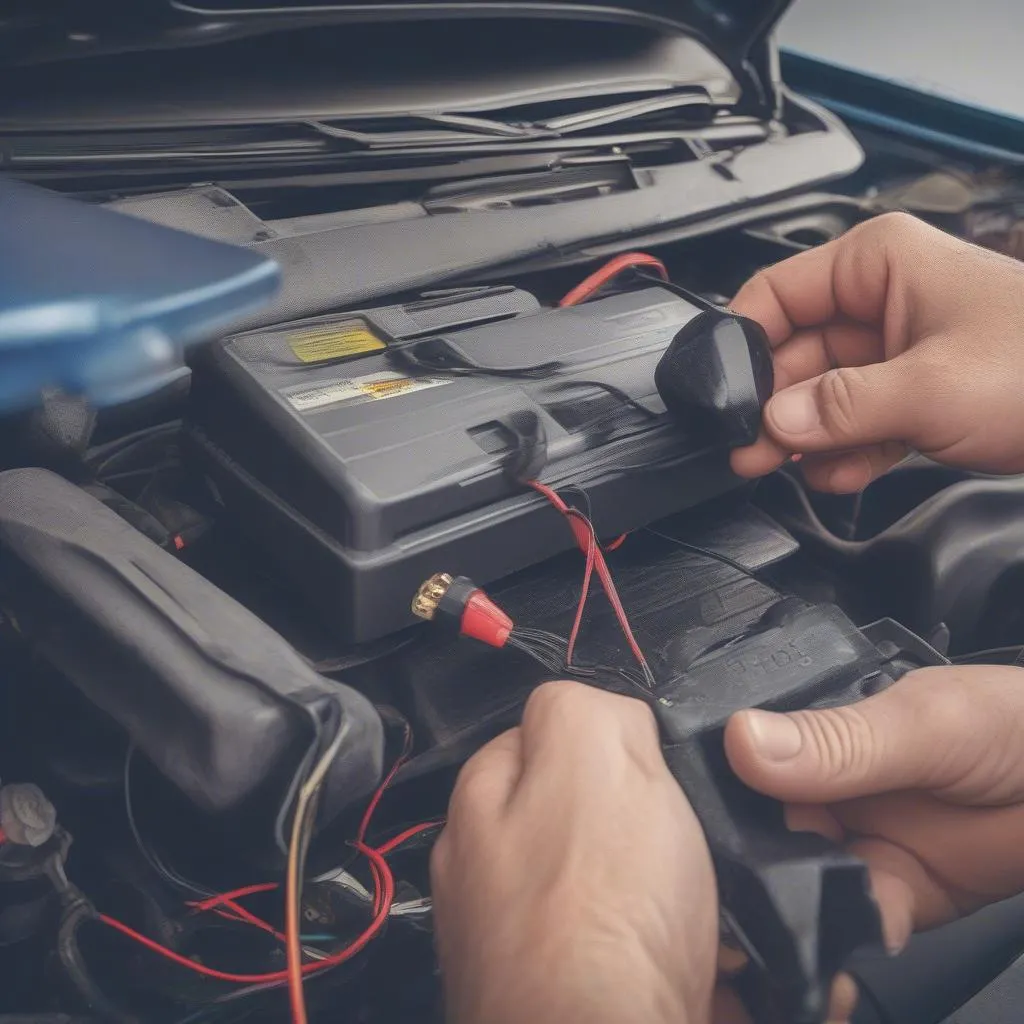The e-brake warning light on your 2006 Honda Accord illuminating can be a concerning experience. Fortunately, understanding the common causes and knowing how to address them can save you time and unnecessary trips to the mechanic. This article explores the potential reasons behind the “2006 accord e brake warning” and provides a step-by-step guide to help you resolve this issue.
Understanding the E-Brake Warning Light
The e-brake warning light is a safety feature designed to alert you of two primary issues:
- Engaged Parking Brake: The most common reason for the warning light is simply that the parking brake is partially or fully engaged.
- Brake System Malfunction: A more serious issue arises when the light persists even with the parking brake fully disengaged. This typically indicates a problem within the brake system itself.
Common Causes of the “2006 Accord E Brake Warning”
1. Low Brake Fluid: Your Honda Accord, like any other vehicle, relies on hydraulic pressure to activate the brakes. Insufficient brake fluid, often due to leaks or worn brake pads, can trigger the warning light.
2. Faulty Parking Brake Switch: The parking brake switch is responsible for detecting whether the brake lever is up or down. A malfunctioning switch can send a false signal to the car’s computer, causing the warning light to come on.
3. Worn Brake Pads: Over time, brake pads naturally wear down with use. Thin brake pads can cause the brake fluid level to drop, potentially triggering the warning light.
4. Loose or Damaged Wiring: The wiring connecting the parking brake system to the car’s electrical system can become loose or damaged, disrupting the signal and leading to a false warning.
5. ABS Sensor Issues: While less common, a malfunctioning ABS (Anti-lock Braking System) sensor can also trigger the e-brake warning light.
Troubleshooting the E-Brake Warning: A Step-by-Step Guide
Step 1: Check the Parking Brake Lever:
Ensure the parking brake is fully released. Sometimes, the lever might not be completely disengaged, triggering the warning light.
Step 2: Inspect Brake Fluid Level:
Locate the brake fluid reservoir under the hood. Check the fluid level – it should be between the “Min” and “Max” lines.
Step 3: Examine Brake Pads:
Visually inspect the brake pads through the wheel spokes. If they appear significantly thin, it’s best to have them inspected by a mechanic.
Step 4: Seek Professional Diagnosis:
If the warning persists after checking the above, it’s crucial to seek professional diagnosis. A qualified mechanic can accurately pinpoint the issue, whether it’s a faulty switch, wiring problem, or an issue with the ABS system.
Remote Diagnostics and Software Solutions
In today’s technologically advanced world, remote diagnostics and software solutions are becoming increasingly prevalent in the automotive industry. These advancements can be particularly helpful in diagnosing and resolving issues related to the e-brake warning light.
How Remote Diagnostics Work:
“Remote diagnostics utilize specialized software and equipment to connect to your vehicle’s onboard computer system wirelessly,” explains John Miller, Senior Automotive Engineer at XYZ Automotive Solutions. “This allows skilled technicians to access real-time data from your car, including error codes, sensor readings, and system performance indicators.”
By analyzing this data, technicians can identify the root cause of the e-brake warning and potentially resolve the issue remotely through software updates or adjustments.
Benefits of Remote Solutions:
- Convenience: Avoid unnecessary trips to the mechanic, as diagnostics and potential software solutions can be performed remotely.
- Efficiency: Remote diagnostics can often pinpoint issues faster than traditional methods, saving time and potentially reducing repair costs.
- Expertise: Access to specialized technicians with in-depth knowledge of your Honda Accord’s electronic systems.
Important Note: Not all e-brake warning issues can be resolved remotely. Physical repairs or component replacements may still be required depending on the nature of the problem.
Conclusion
The “2006 accord e brake warning” can stem from various causes, ranging from a simple disengaged parking brake to more complex issues like brake system malfunctions. By following the troubleshooting steps outlined in this article, you can potentially identify and address the problem. However, if the warning persists, seeking professional help from a qualified mechanic or exploring remote diagnostics options is crucial to ensure your safety and the optimal performance of your Honda Accord.



